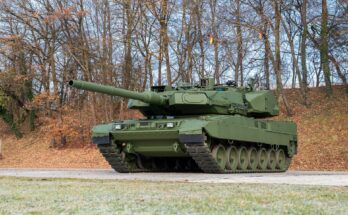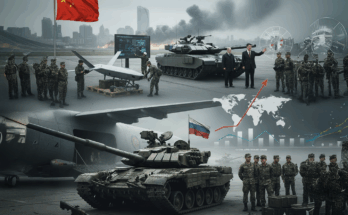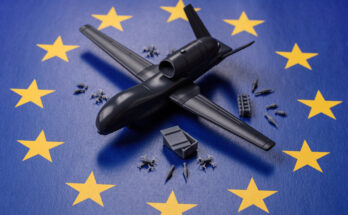 Source: Canadian Armed Forces
Source: Canadian Armed ForcesCanada plans to meet NATO’s goal of spending two percent of GDP on defense this year, seven years earlier than planned, Prime Minister Mark Carney said in a speech Monday. At the same time, Ottawa appears poised to reduce its reliance on U.S.-made military hardware.
The government announced CAD 9.3 billion (USD 6.8 billion) in newly planned funding for the Department of National Defence (DND). The investment will support recruitment efforts, increase soldier pay to improve retention, and fund military acquisition programs. Carney pledged to procure new submarines, aircraft, ships, vehicles, artillery and munitions, drones, and sensors. He also vowed to bolster Canada’s domestic defense industrial base.
While the speech did not detail specific procurement programs, Canada has several major ongoing acquisition efforts, including new F-35 fighters and a fleet of destroyers based on the Type 26 frigate, which will replace the Navy’s Halifax-class frigates. Ottawa is also considering the purchase of 12 new submarines and has expressed interest in new capabilities such as self-propelled howitzers, rocket artillery, and air defense systems.
A government briefer outlined a plan to invest CAD 2.6 billion in recruitment and retention initiatives. The goal is to grow the force to 71,500 regular members and 30,000 reservists by 2030. To reach that target, approximately 13,000 additional personnel will be required.
Other planned investments include:
- CAD 2 billion to develop stronger defense partnerships abroad
- CAD 1 billion to expand and enhance military capabilities
- CAD 2.1 billion to strengthen the domestic defense industrial base
- CAD 844 million for equipment sustainment and infrastructure improvements
- CAD 560 million in additional funding for cyber capabilities
Canada has historically struggled to meet its defense spending goals and the DND has often failed to allocate all available funds within a given fiscal year. Even if new funding materializes, inefficient and overly complex procurement processes remain a key obstacle. Carney announced the formation of a new defense procurement agency to help address these concerns. The agency is intended to centralize decision-making for military programs with the goal of improving and accelerating the acquisition process. If reform efforts fails to materialize, the impact of these investments could be blunted.
Meanwhile, NATO leadership has been discussing the possibility of raising its defense spending benchmark to three percent of GDP or higher. It remains unclear whether Canada would be willing or able to meet those more ambitious targets.
Shifting Defense Ties Away from the U.S.
Carney also addressed the evolving relationship with the United States. Relations have deteriorated under President Trump following the imposition of tariffs and his antagonistic rhetoric against Ottawa, and Carney said Canada is too reliant on the U.S.
“We stood shoulder to shoulder with the Americans throughout the Cold War and in the decades that followed, as the United States played a dominant role on the world stage. Today, that dominance is a thing of the past,” Carney said. “The United States is beginning to monetize its hegemony, charging for access to its markets and reducing its relative contributions to our collective security,” he added.
Although the U.S. and Canadian defense sectors remain deeply integrated, Ottawa is signaling a desire to forge stronger defense partnerships with European allies. Carney said Canada should no longer send three-quarters of its capital defense budget to the U.S. and that the military should prioritize buying from Canadian industry, including raw materials like steel and aluminum. A reduced reliance on U.S. equipment could also increase dependence on overseas vendors. For example, Canada is currently reviewing its purchase of U.S.-made F-35 fighters to determine whether to continue purchasing the aircraft.
Carney rightly observed that Canada’s military is in rough shape, highlighting that only one of its four submarines is seaworthy and that less than half of its maritime fleet and land vehicles are operational. There are plentiful opportunities ahead if Canada lives up to its promise to streamline acquisition and invest more heavily in its armed forces.
Shaun's deep-rooted interest in military equipment continues in his role as a senior defense analyst with a focus on the United States. He played an integral role in the development of Forecast International's U.S. Defense Budget Forecast, an interactive online product that tracks Pentagon acquisition programs throughout the congressional budget process. As editor of International Military Markets – North America, Shaun has cultivated a deep understanding of the vast defense markets in the United States and Canada. He is a regular contributor to Forecast International's Defense & Security Monitor blog and has co-authored white papers on global defense spending and various military programs.
image sources
- The 3rd Battalion, Princess Patricia’s Canadian Light Infantry conduct a live trench warfare range: Canadian Armed Forces




